Danger Defined: 2D Animator
In my role as the 2D Animator, my primary objective was to produce animations that fully met project requirements. This included setting clear project goals, creating a structured animation plan to meet deadlines, and actively communicating with both team members and supervisors for feedback. I consistently adapted my skills to meet evolving project needs, staying flexible and responsive to changes, and contributing to a cohesive, high-quality final animation.
Production Process

Animation tests help us find the right number of frames for the animation.

The caption test focused on exploring various fonts, sizes, colors, and alignments to create impactful captions and text elements.

This is a storyboard drawn by Art Direction, which helps the team understand the details of each scene's composition, character positions, camera angles, etc. by translating the text of the script into a series of images.
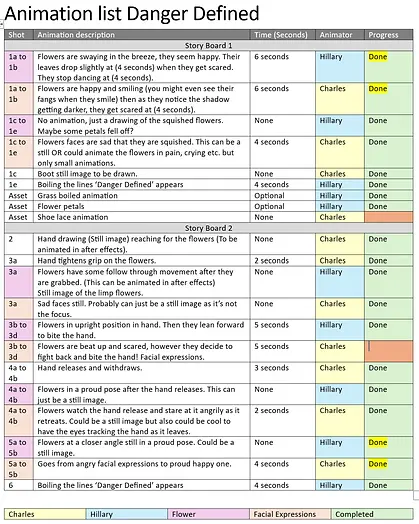
This schedule clearly and thoroughly outlines each creator's responsibilities, which also assists in our time management. On the right, it displays the character animations for each section. I am responsible for creating the character movements, which are then passed to another 2D animator to draw the character's facial expressions.
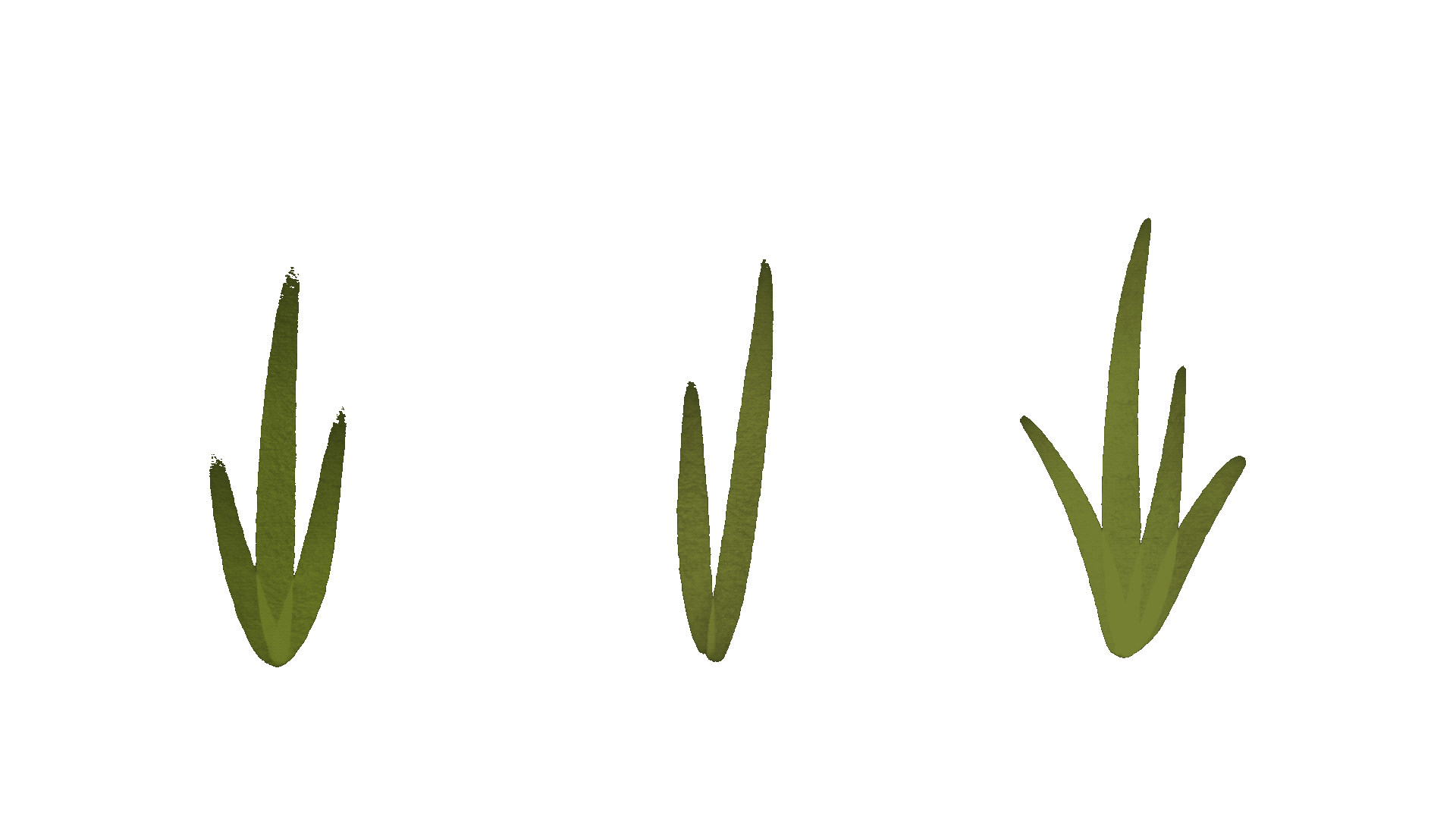
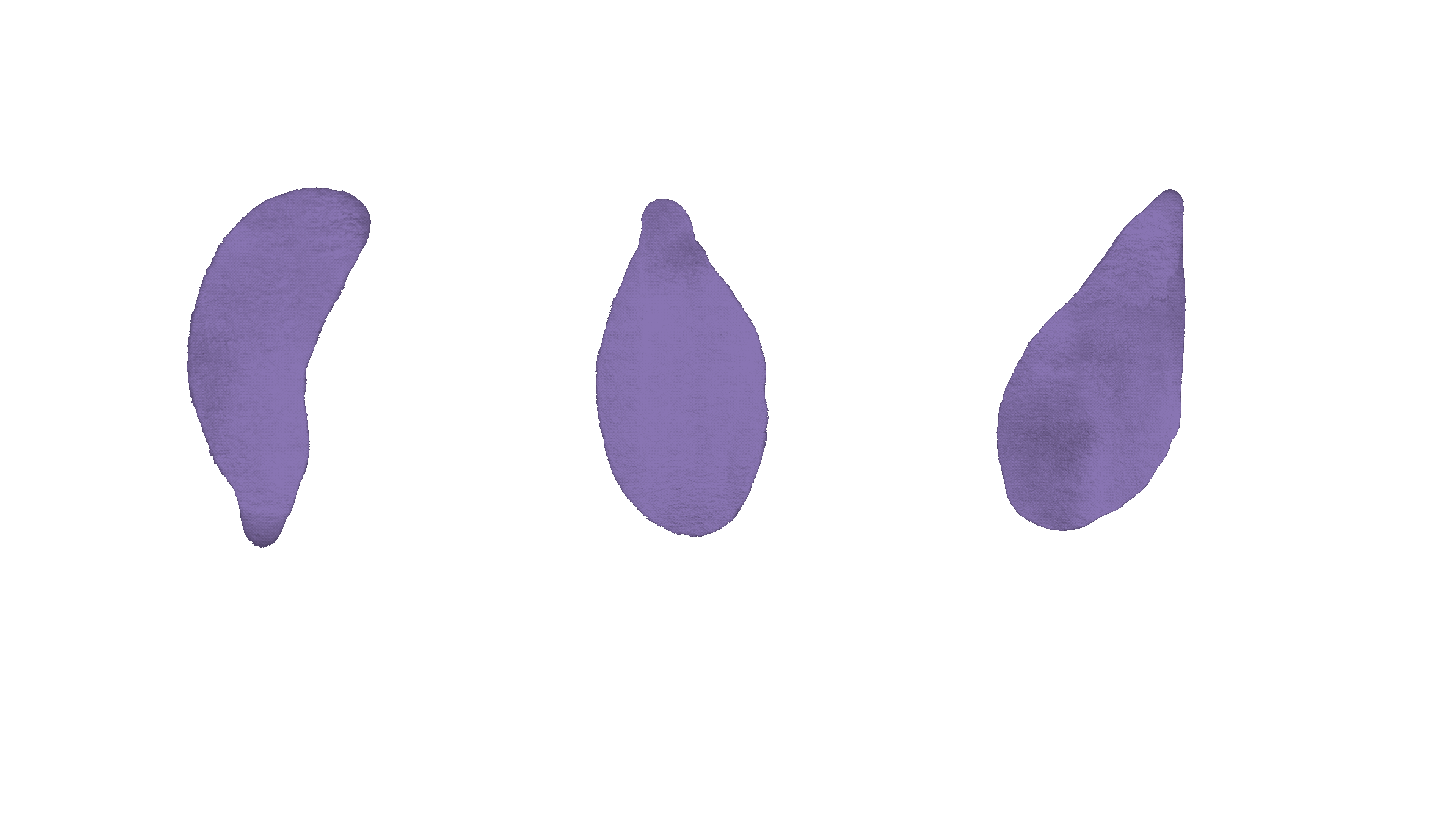
After integrating the character with the background, I created additional elements in the same style, such as grass and petals, to enhance the cohesion. These were incorporated into the production to improve the overall blending effect.
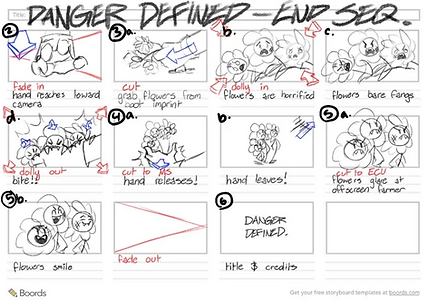
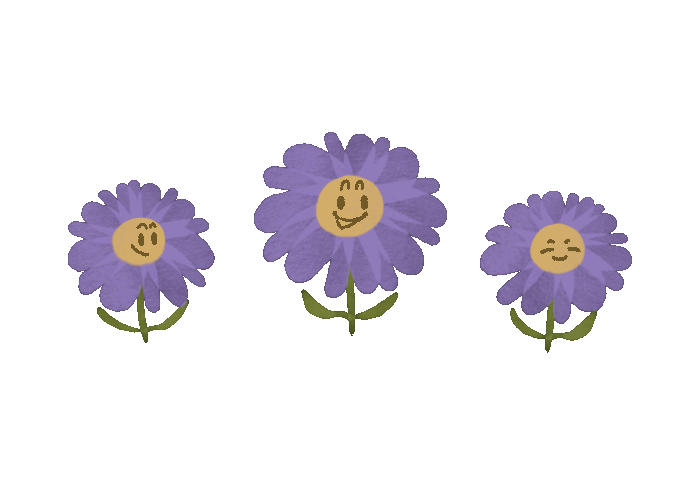
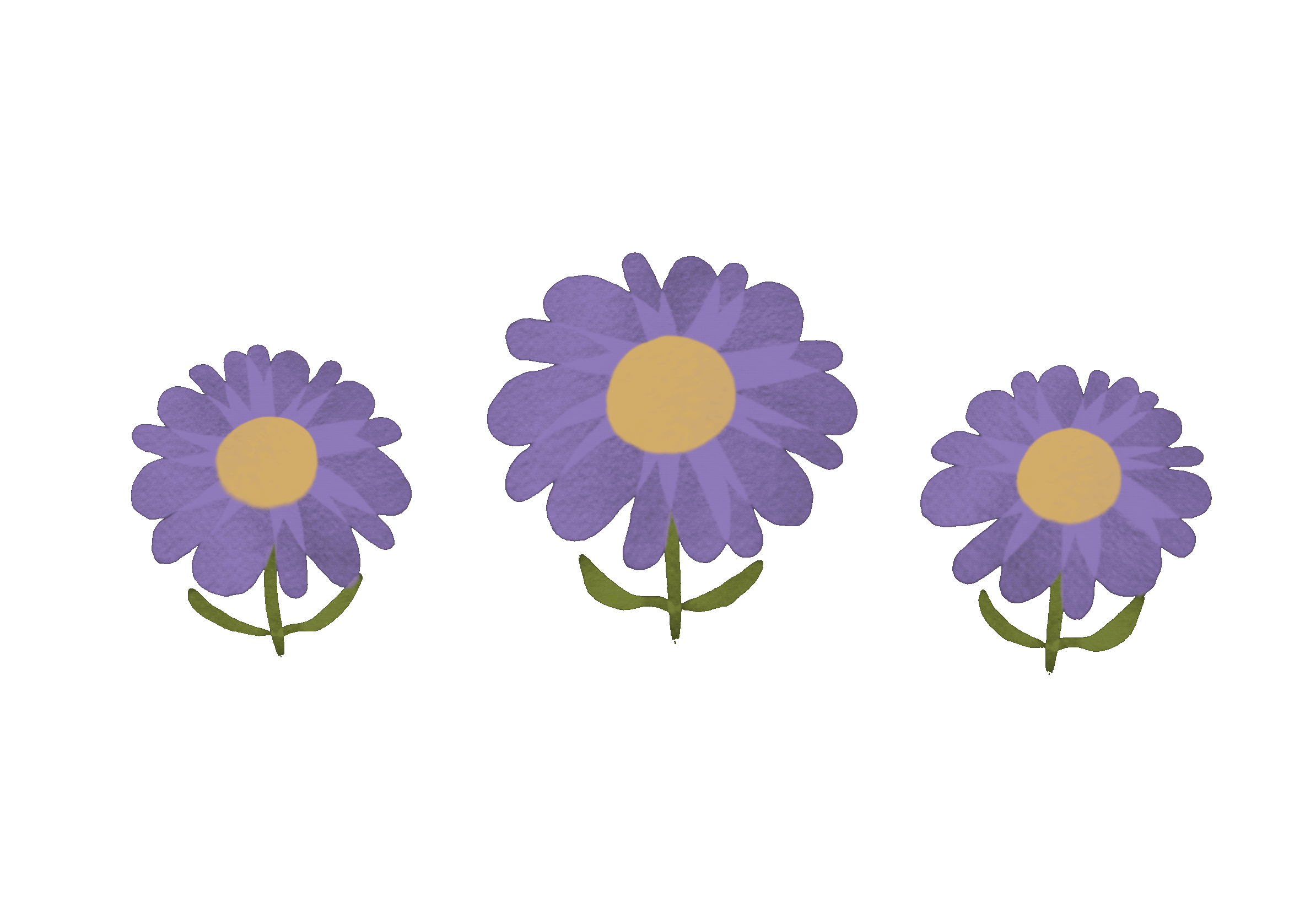

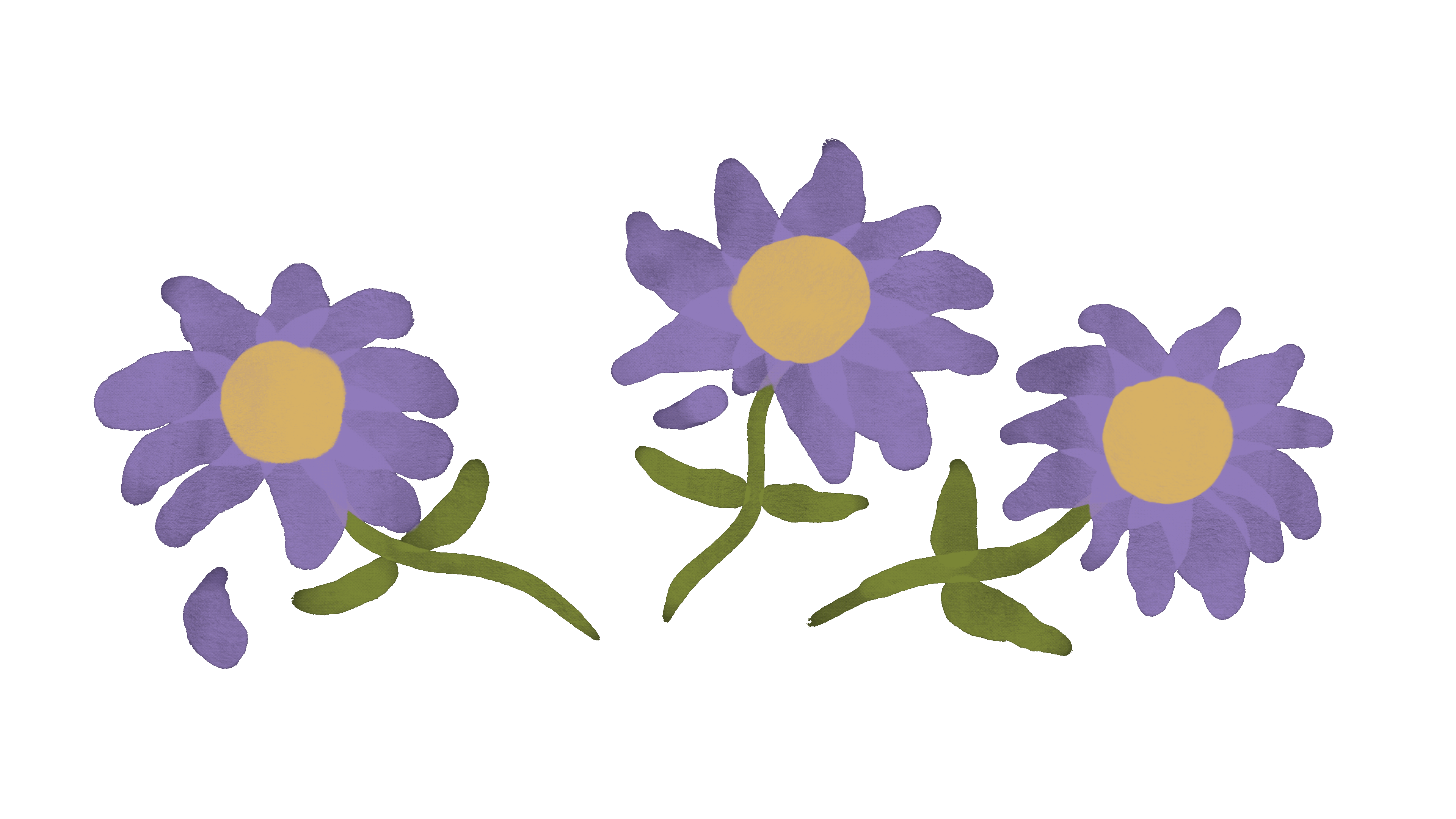
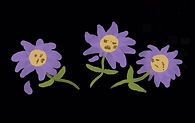

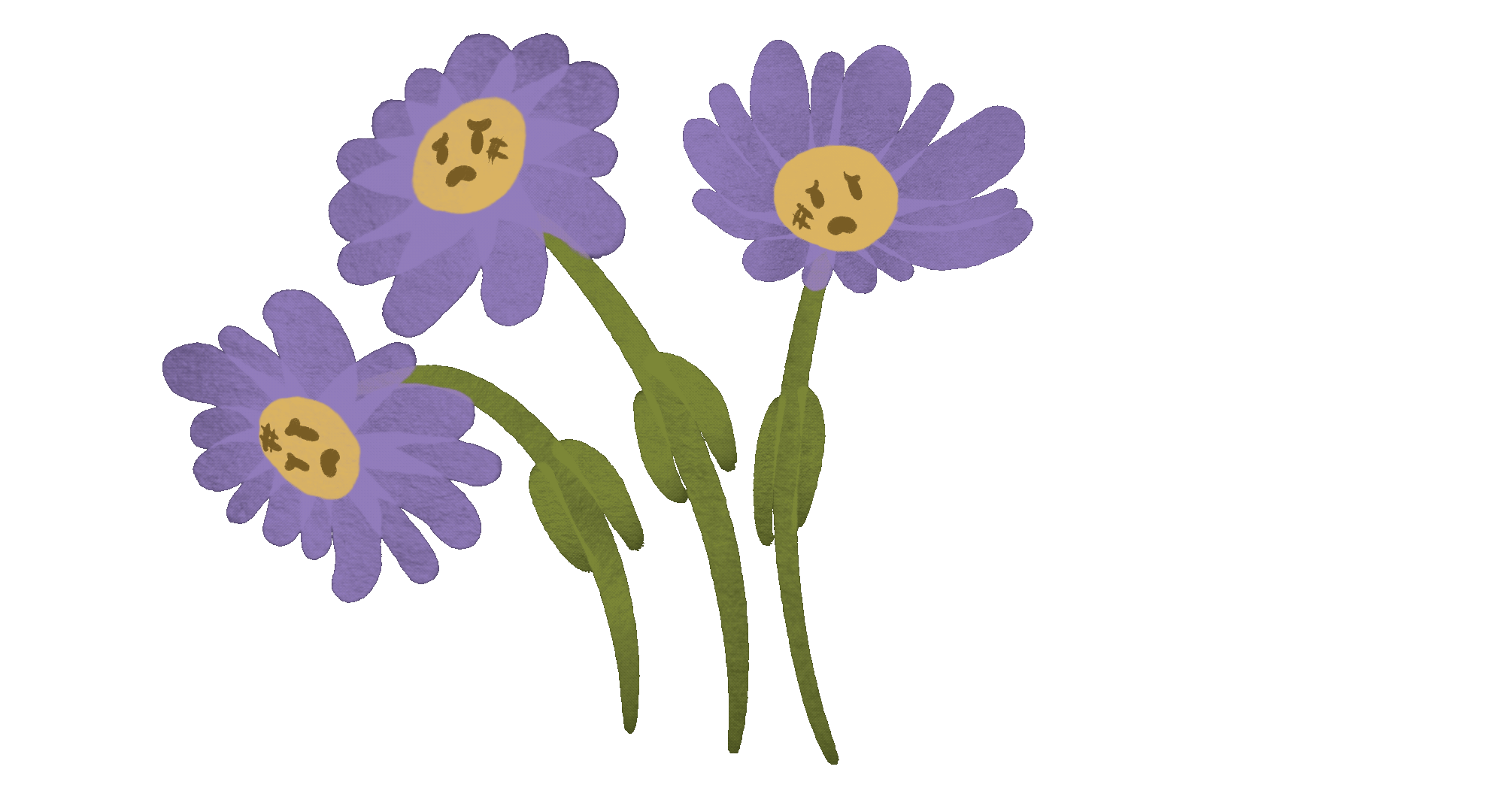


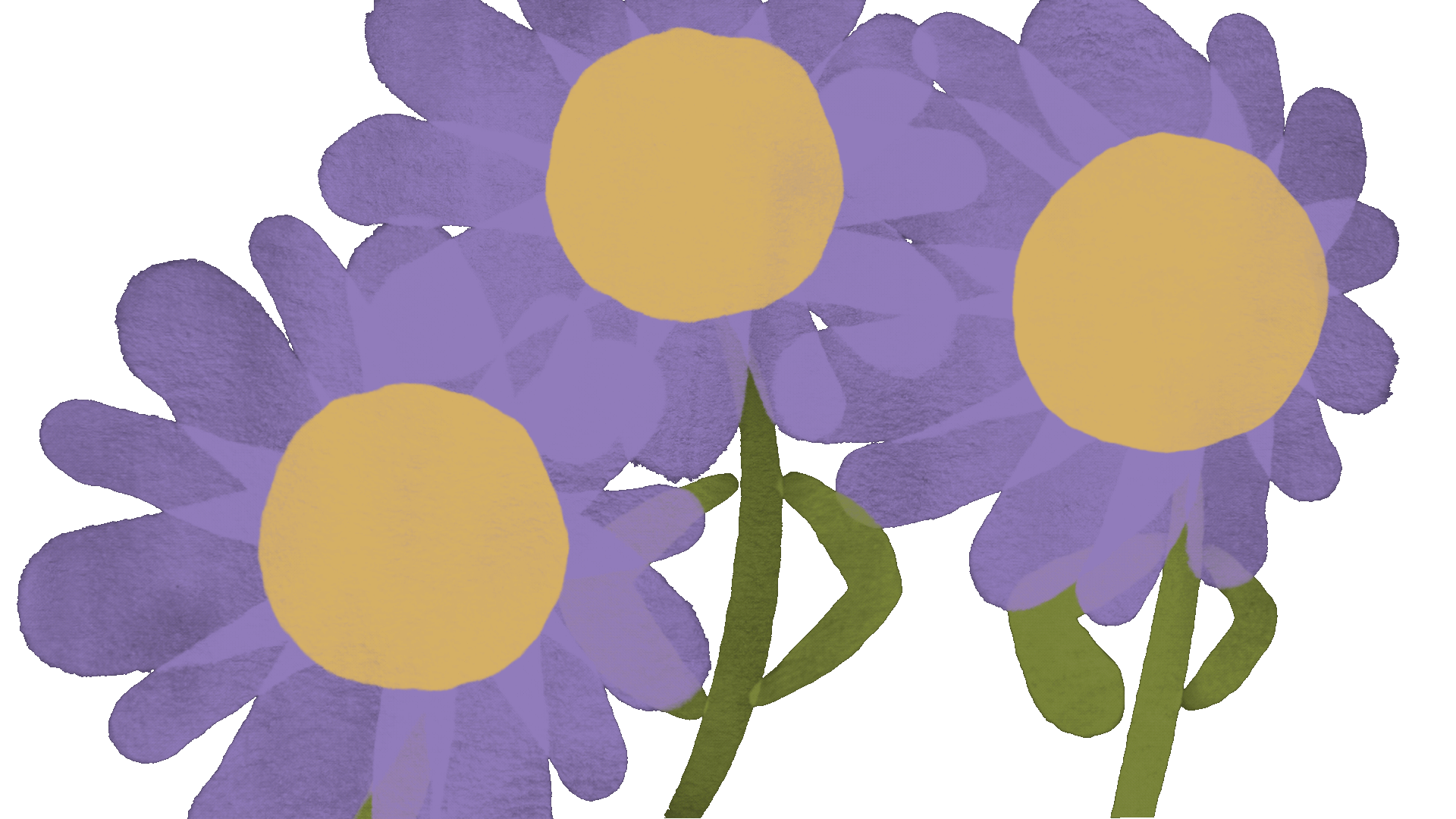
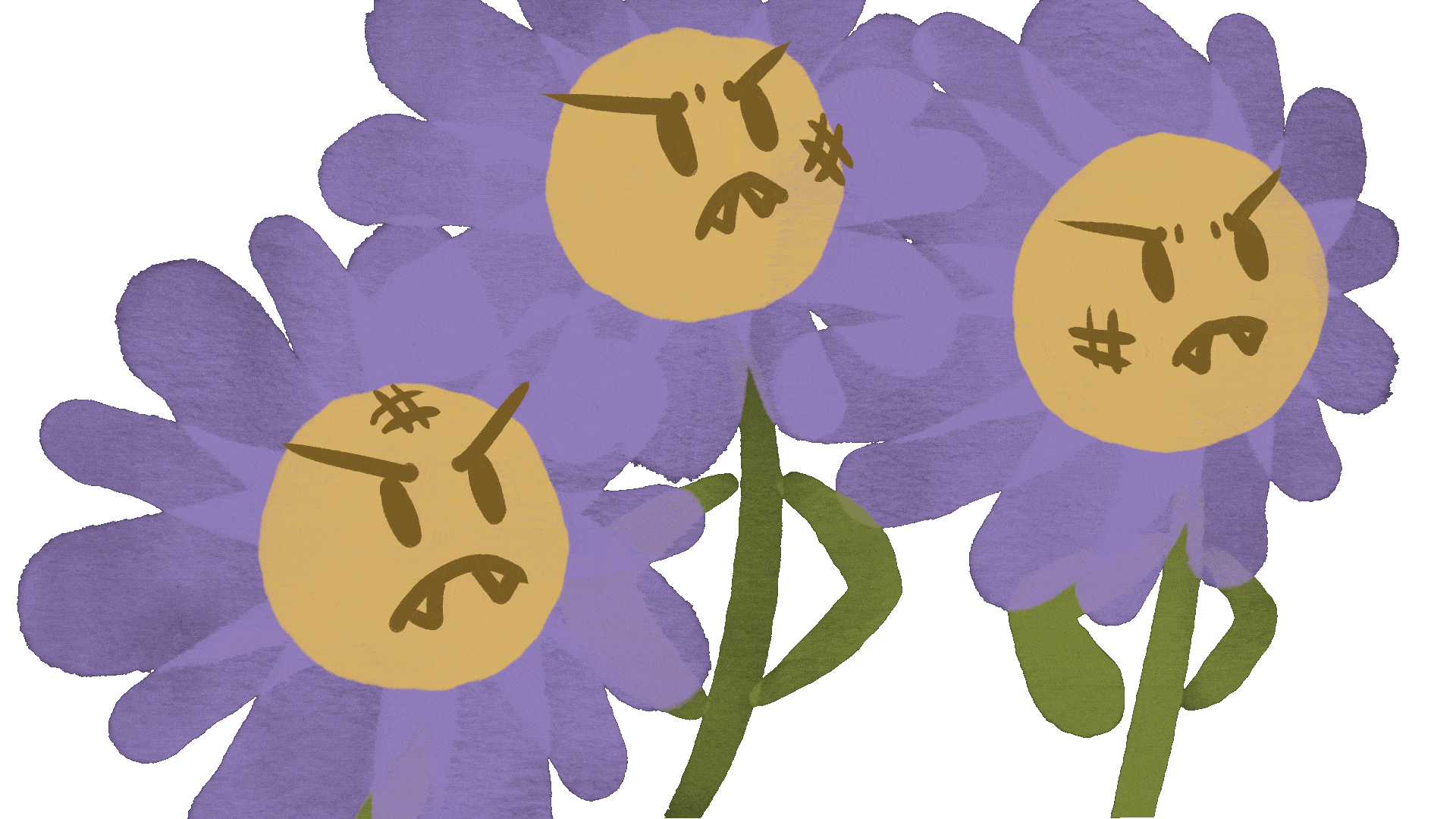

This displays the iterative process at each stage, with continuous feedback and revisions to achieve the desired outcome.
Challenges and Solutions
To maintain smooth animation with a limited frame count, we aimed to achieve a stop-motion-inspired effect by using a lower frame rate. However, this approach risked making the animation appear less fluid or polished.
Through frame rate testing, I identified the optimal balance between smooth motion and the desired stop-motion aesthetic. Adjusting keyframes and timing helped retain fluidity while preserving the intended style.
With a small team and a complex animation schedule, establishing the concept style in the initial phase consumed a significant amount of time. Completing the project on time became a key challenge with the limited timeframe.
Effective communication and a structured workflow, with task prioritization and milestone setting, helped ensure each phase was completed on time. This approach allowed us to make adjustments based on feedback without impacting the final deadline.
Result
The final animations successfully met the documentary's requirements, bringing the title sequence, end sequence, and credits to life in a style that was both visually appealing and appropriate for the documentary's sensitive theme. The stop-motion-inspired animation, combined with the chosen watercolor and children’s illustration style, added a unique, hand-crafted feel that resonated with the documentary’s tone. Through close collaboration with the film production team, each animated sequence aligned seamlessly with their vision, enhancing the documentary’s storytelling and leaving a memorable impression. Through this project, I strengthened my animation skills, improved my ability to adapt to project-specific needs, and gained valuable experience in collaborating within a multi-disciplinary team.